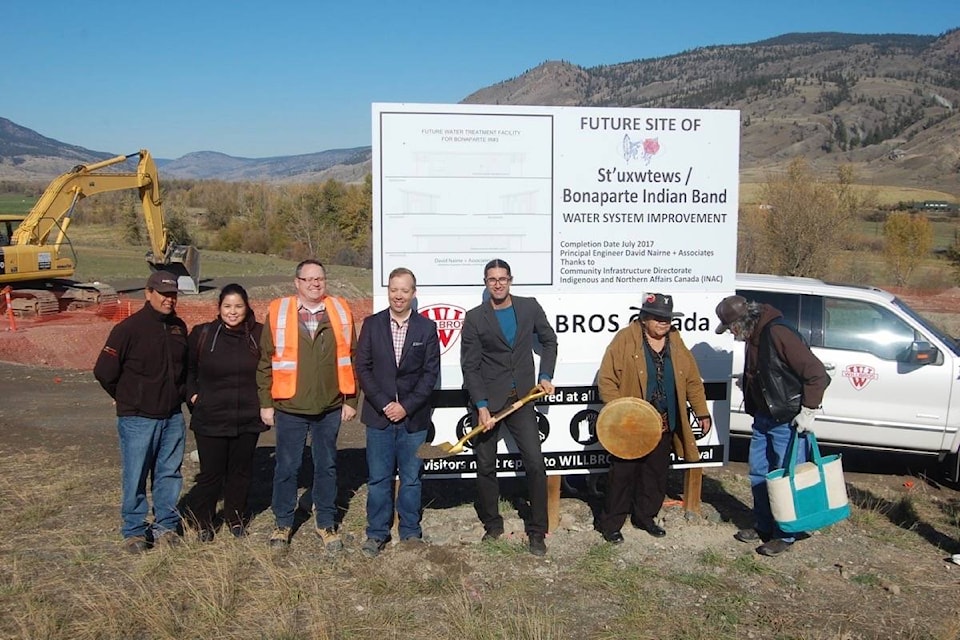Looking back at the decision to evacuate the Bonaparte Reserve on July 7, Bonaparte Indian Band chief Ryan Day says that for most people it was not an issue to evacuate. Firefighters and support people stayed behind, and Day says that while some residents decided to stay in their homes, a system was set up so they could be checked on regularly. “We had a back-up evacuation plan if things went south.”
IR 3 was on evacuation order until July 28, while IR 2 near Hat Creek Road was on evacuation order during that period and then again in late July/early August. “We had an Emergency Operations Centre set up at the Band hall near the church, and set up Facebook and phone communications. We updated every day at noon and at 8 p.m., for consistency. There were meetings with firefighters and RCMP once a day, then twice a day. We met to say how the day had gone, and what the next day looked like.”
Day says that while the only structure lost was a vacant home, there was a worry that the fire to the west might jump the valley and come back toward the reserve. While Cache Creek’s evacuation order ended on July 18, Day says the decision was made not to end the order on the reserve until July 28, so that fuel loads could be reduced.
“The fuel build-up is off the charts for the Interior,” he says. “Ideally there’d be controlled burns every year, but there’s not a lot of will among residents to do that. People don’t want two weeks of smoke. Traditionally we burned in the spring, after the first snow. It’s good for the ecosystem. We’d get rid of juvenile firs to maintain the grasslands. You don’t want a high-intensity burn; that kills the seed banks, and means a prolonged recovery. The soil will wash away, and just leave rocks.”
Day says that the new water treatment plant on IR 3 is due to be fully online in January 2018. Construction began on it in earnest in October 2016, and the new reservoir has three times the capacity of the old system, giving the reserve more firefighting capability. “The present well has a [firefighting] capacity of 20 minutes.” The water will be treated, then transferred to the reservoir, then come back down to the plant to be softened before being distributed by the current water lines.
READ MORE: Treatment plant means better water for Bonaparte
IR 1 and IR 2 also have longstanding water issues, says Day, noting that they have been on a permanent Boil Water Notice for 12 years. “The homes there are more spread out, but we’re making some progress.”
Day says that the Band is moving ahead, and has been able to hire more people. “In terms of organization we’re a lot more stable. We have a solid Band manager, and four people in the finance department. We’re providing more services all the time, and we’re light years in better shape than we were five or six years ago.”
Looking ahead, Day says that the big thing will be remediation of the land. “We have such a strong stake in our lands. We’re very busy working with the province and neighbouring communities about remediation. We’re applying for grants for research projects, in areas like water, forests, and wildlife. It’s exciting to get more people on the land, and more local input.”
He says they are also looking more at tourism. “We’re due to have a community-to-community forum with the Village of Cache Creek, and are looking to work more locally regarding tourism. We need to diversify and develop the whole economy, and we need to band together to get investment.”
He adds that last year’s fires overtook everything. “We need to plan for the future, if this is going to be a recurring thing with climate change. I’m very concerned about flooding in the Bonaparte watershed.”
On the positive side, Day says that he has noticed that quite a few younger people want to live in the area. “They commute to work at the mine. We need to create good quality, lasting jobs.”
He adds that the relationship with the new provincial government is changing for the better. “They’re saying the right words, and there are lots of opportunities, but it’s still early. And we’ve been doing some comprehensive community planning for the last couple of years, lots of strategic planning and foundation work. It’s never really been done before.
“We need to educate people about planning, and the importance of planning. It’s building the foundation of the community, and will make us more stable, with more long-term growth.”
editorial@accjournal.ca
Like us on Facebook and follow us on Twitter
